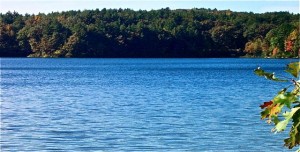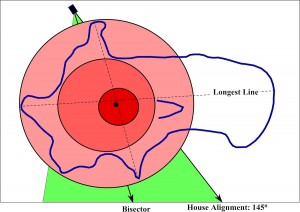Introduction
Beneath the tranquil epicenter of Walden Pond lies the deeper reality of the glacial lake and its hypocenter on ancient bedrock. Walden’s Shore explores Thoreau’s understanding of that physical reality, and how he leveraged that understanding into incomparable prose-poetry. For readers interested in Thoreau and 19th century history, I present the case that Walden is as fundamentally a geo-centric as it is anthrocentric or ecocentric.

View of the south shore of Walden’s western basin. Thoreau combined his knowledge of the ponds radial symmetry with the steepness of the bouldery banks to theorize that Walden Pond originated as a sinkhole “sunk” below the bed of an abandoned river that flowed during an earlier geological epoch. His theory was as correct as it was radical for his era.

From his famous bathymetric “pond survey,” Thoreau recognized the star-shaped radial symmetry of Walden’s western basin, which he overlooked from his house. The outer edge of kettle collapse, the inner edge of the coves, and the flat bottom are all concentric around the “deepest resort,” which ranged from -102 feet or -107 feet depth, depending on the height of Walden’s “stony shore.”